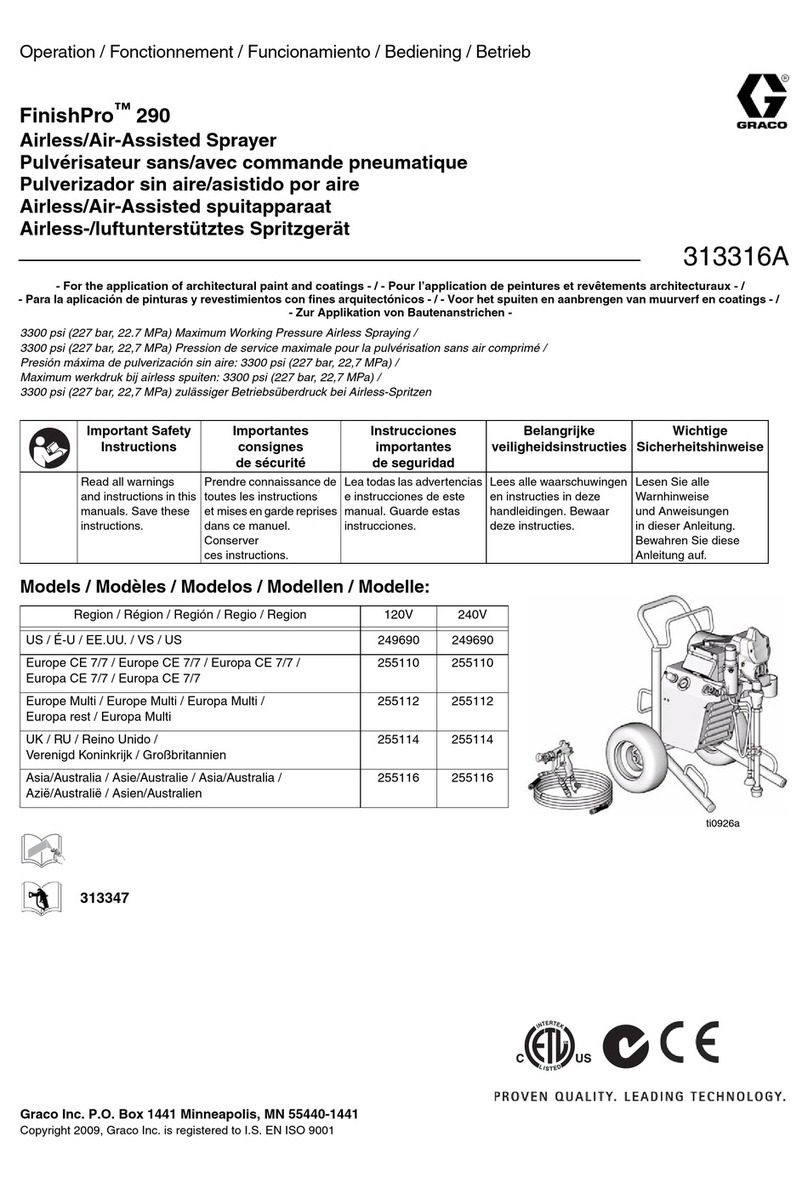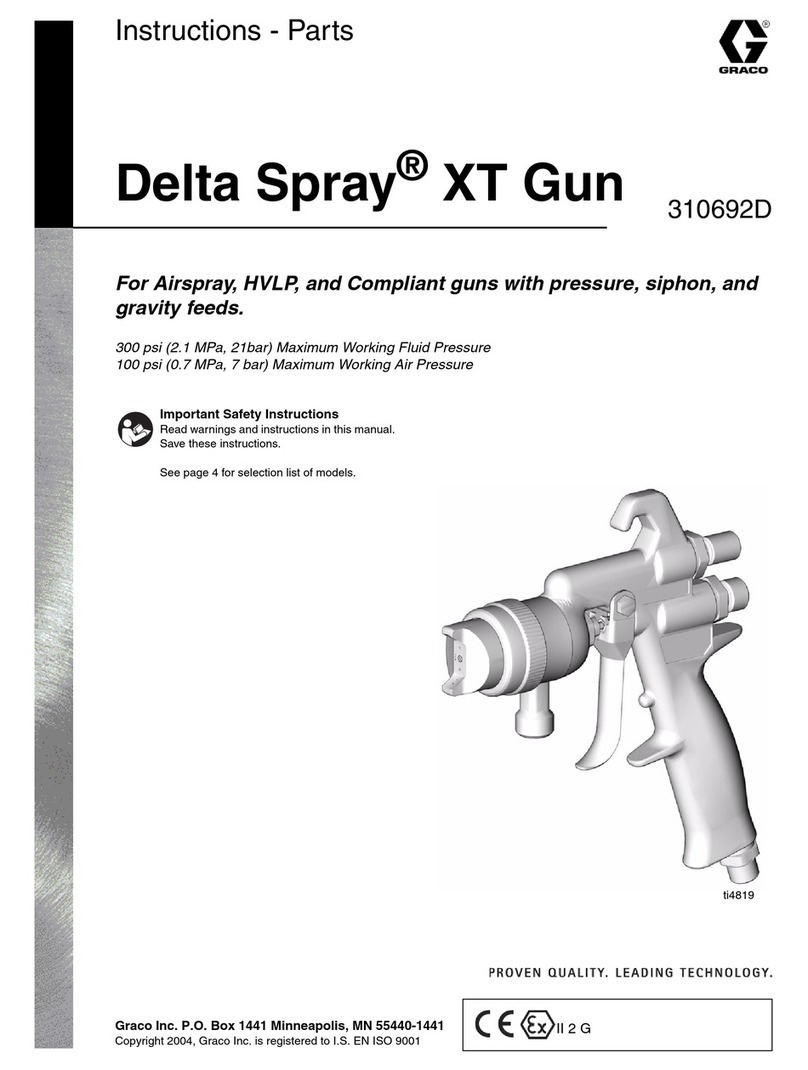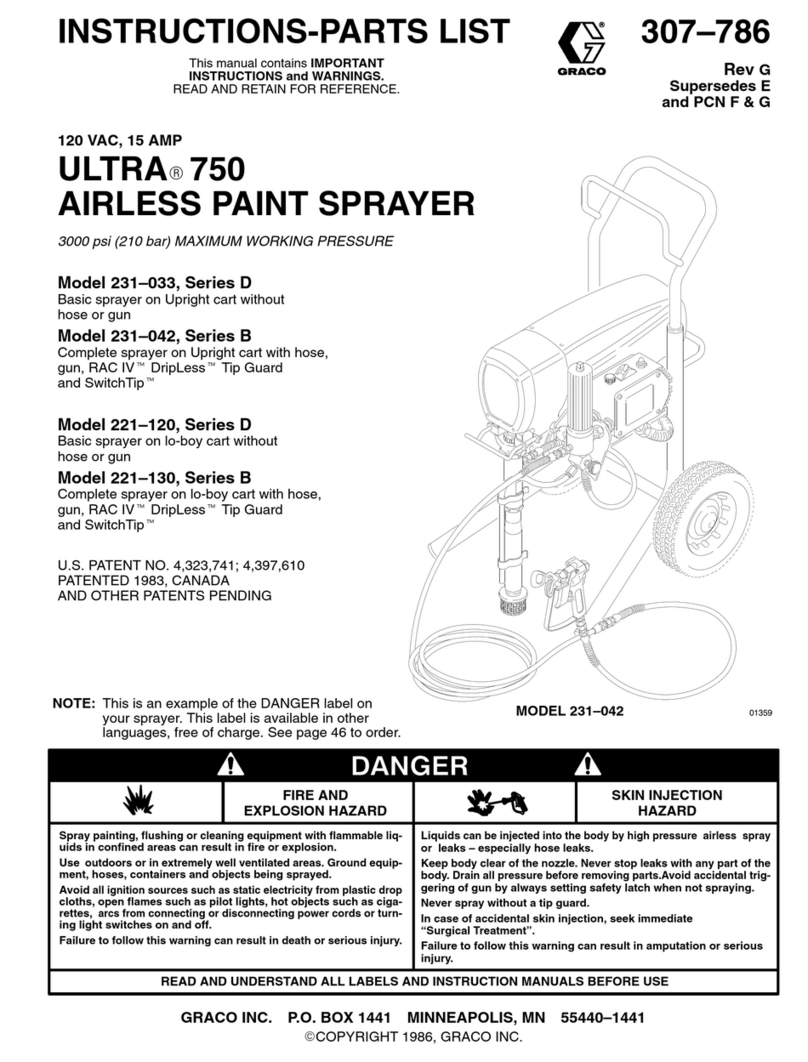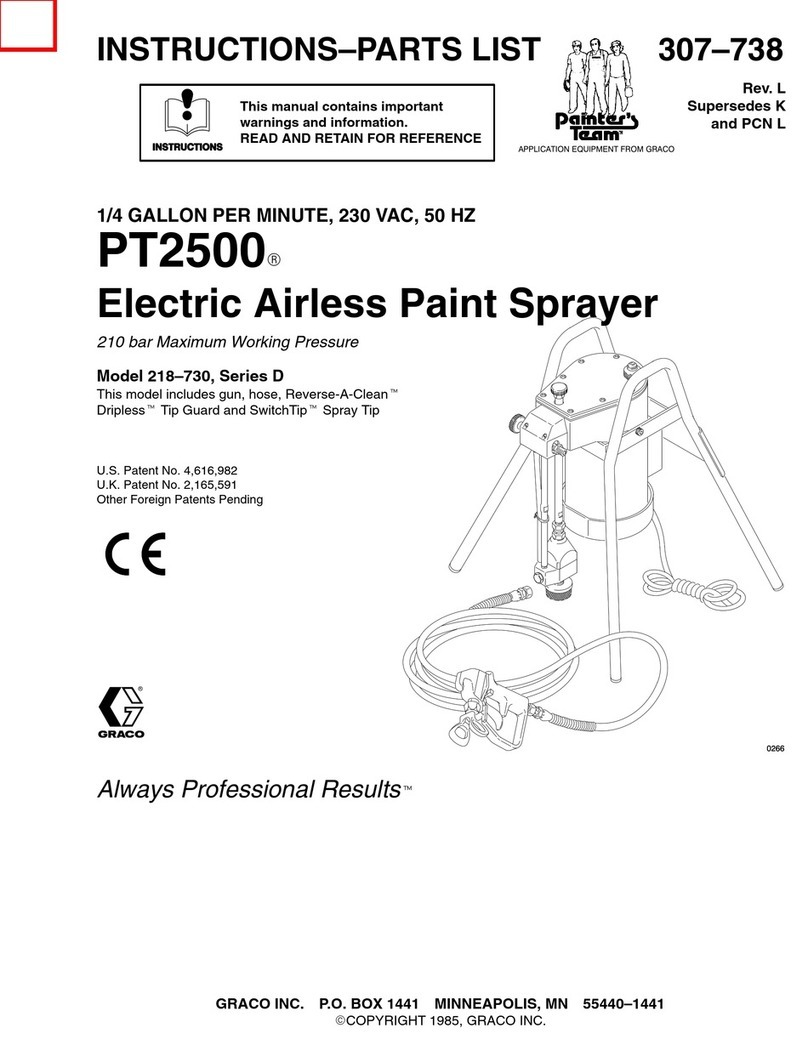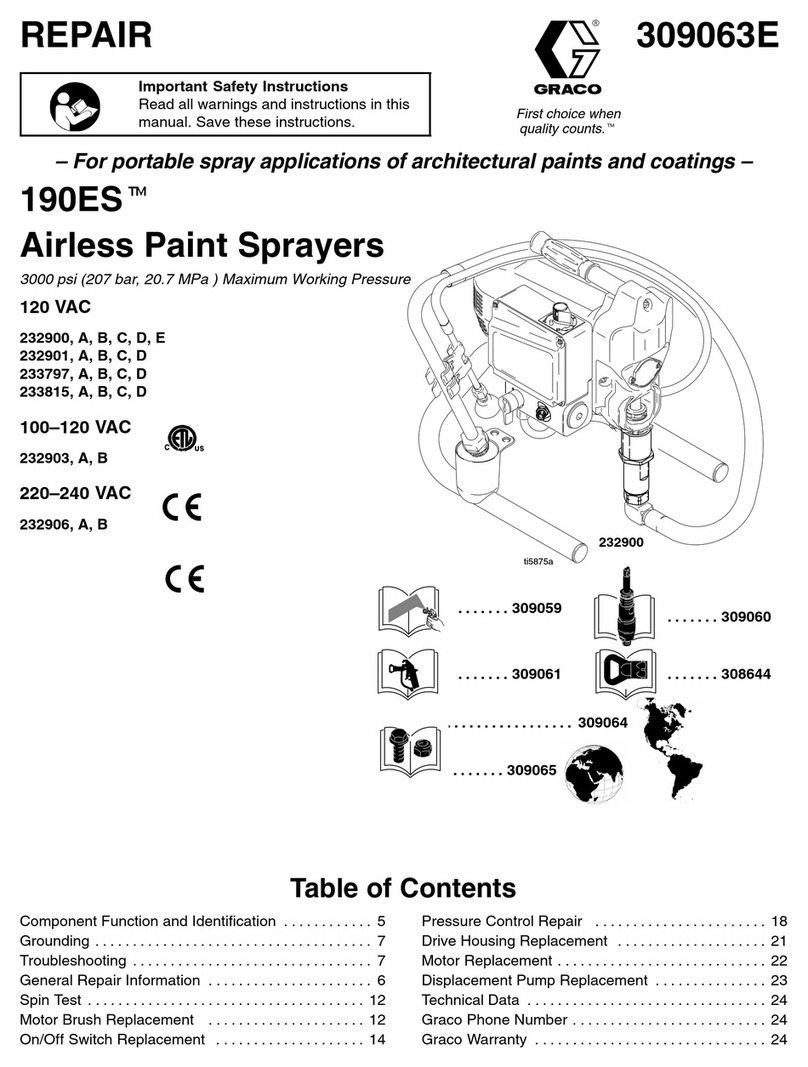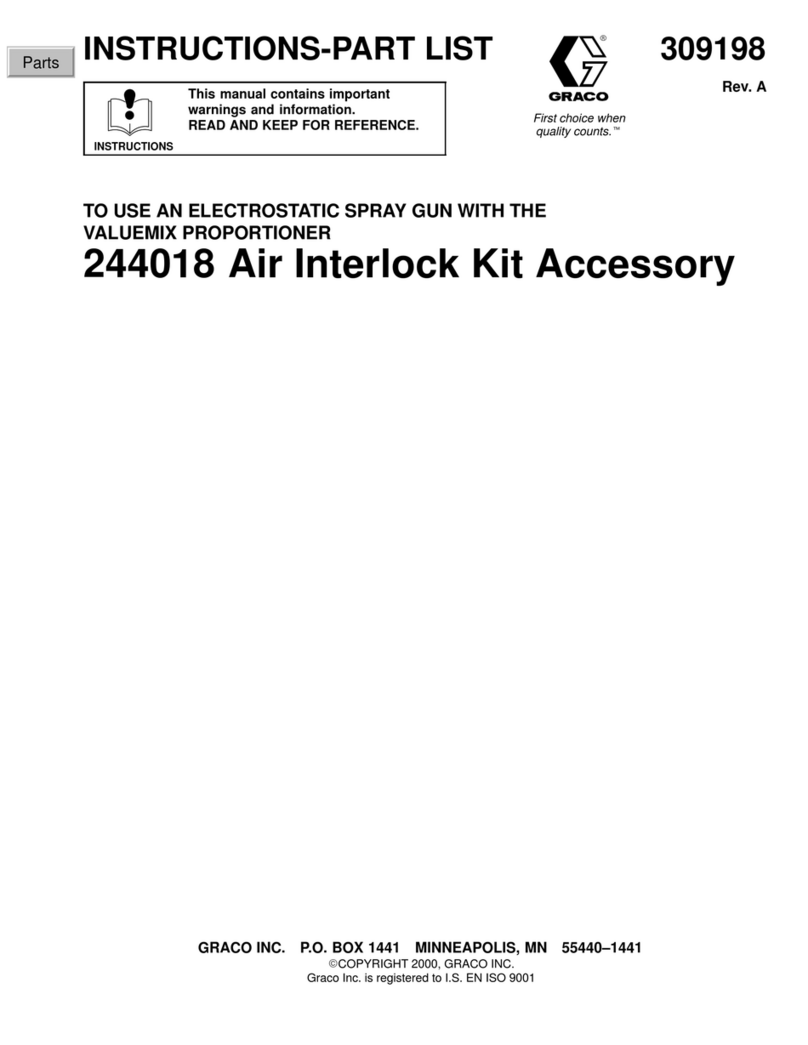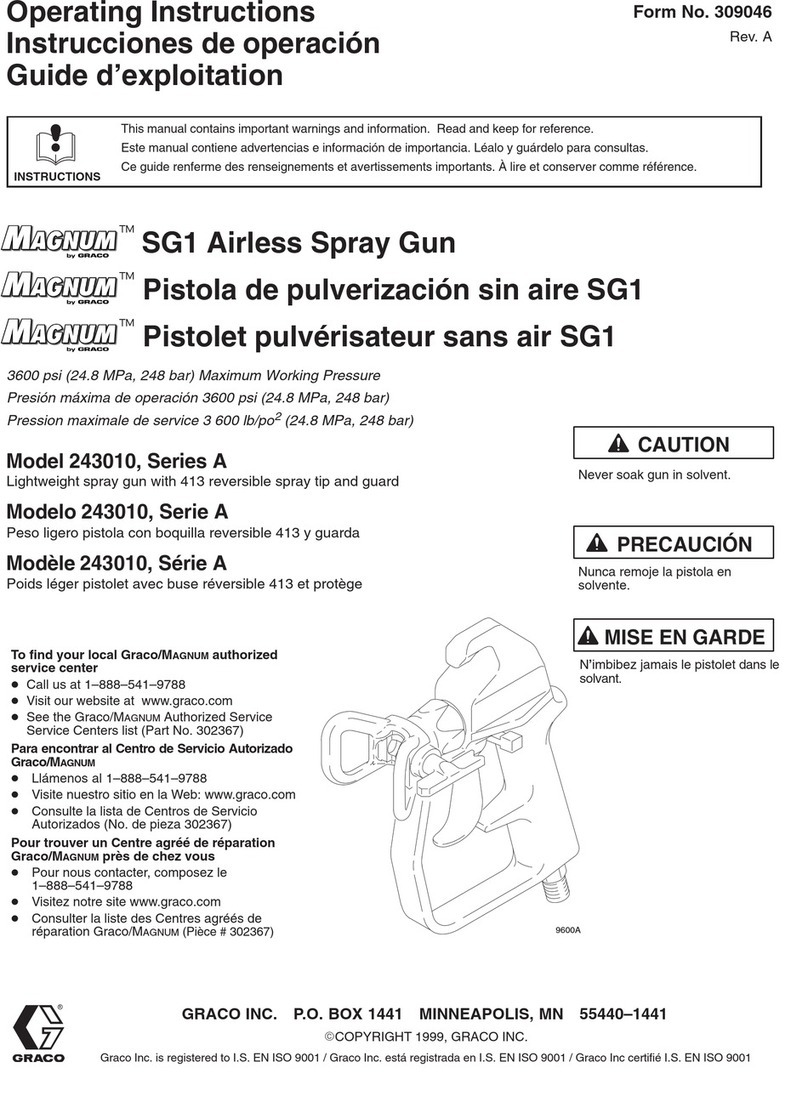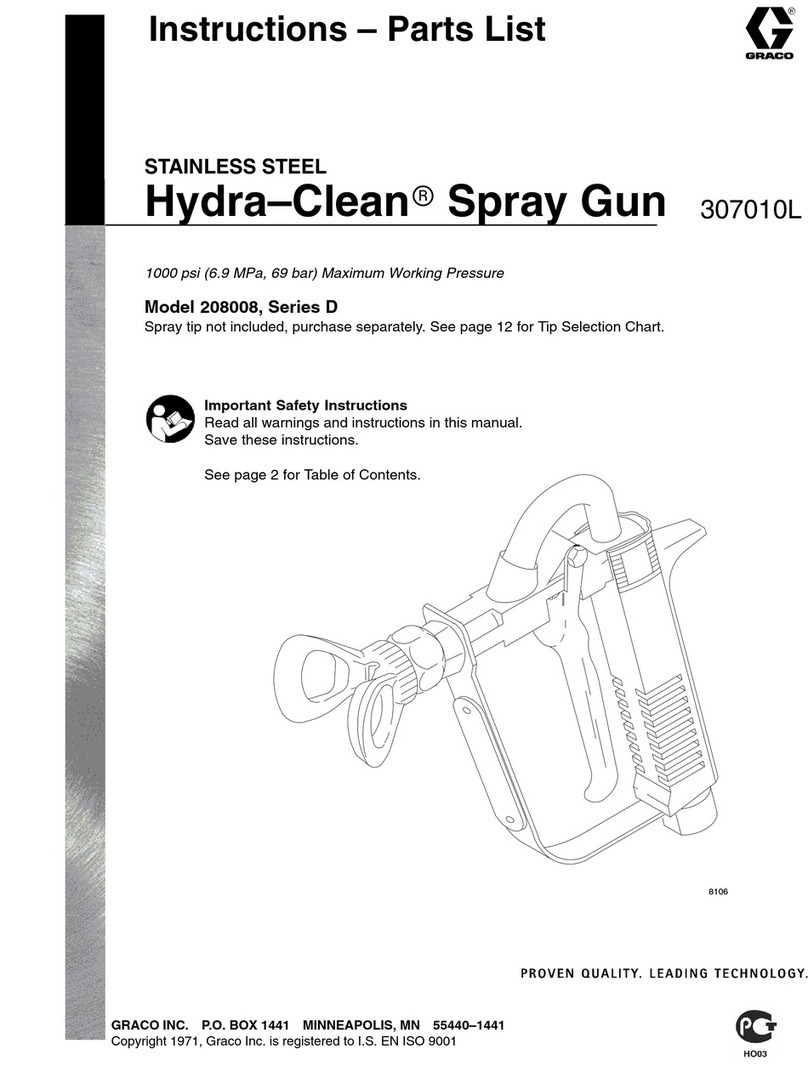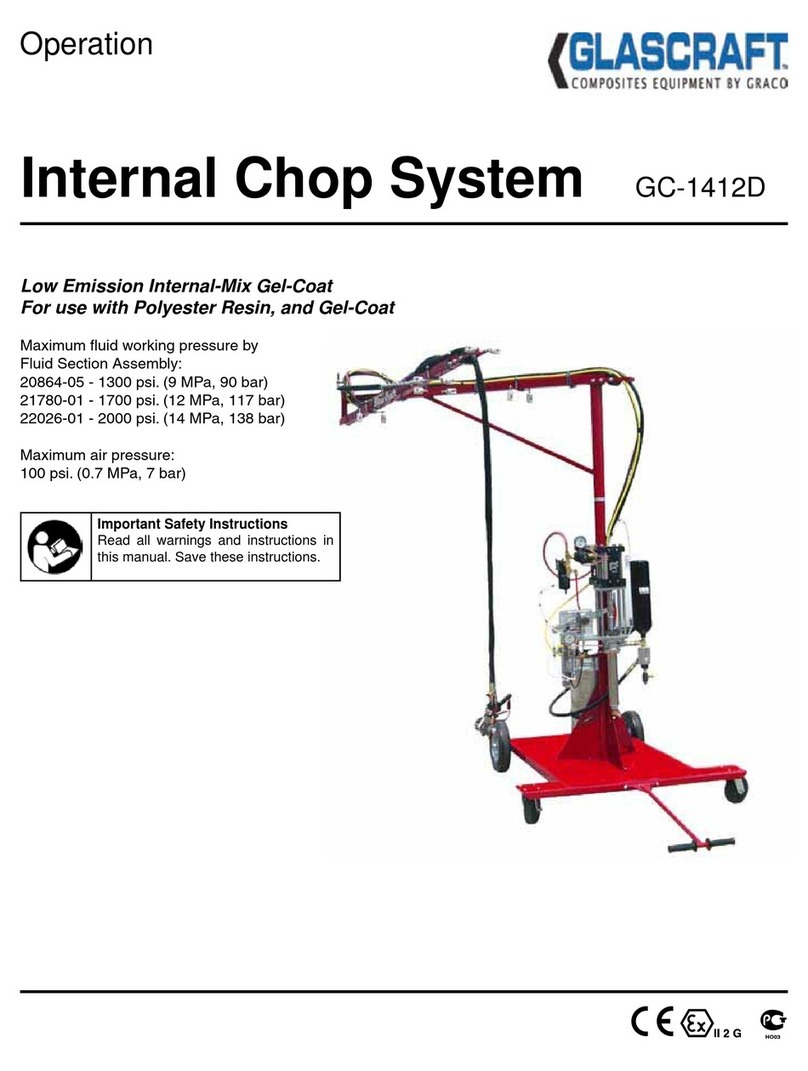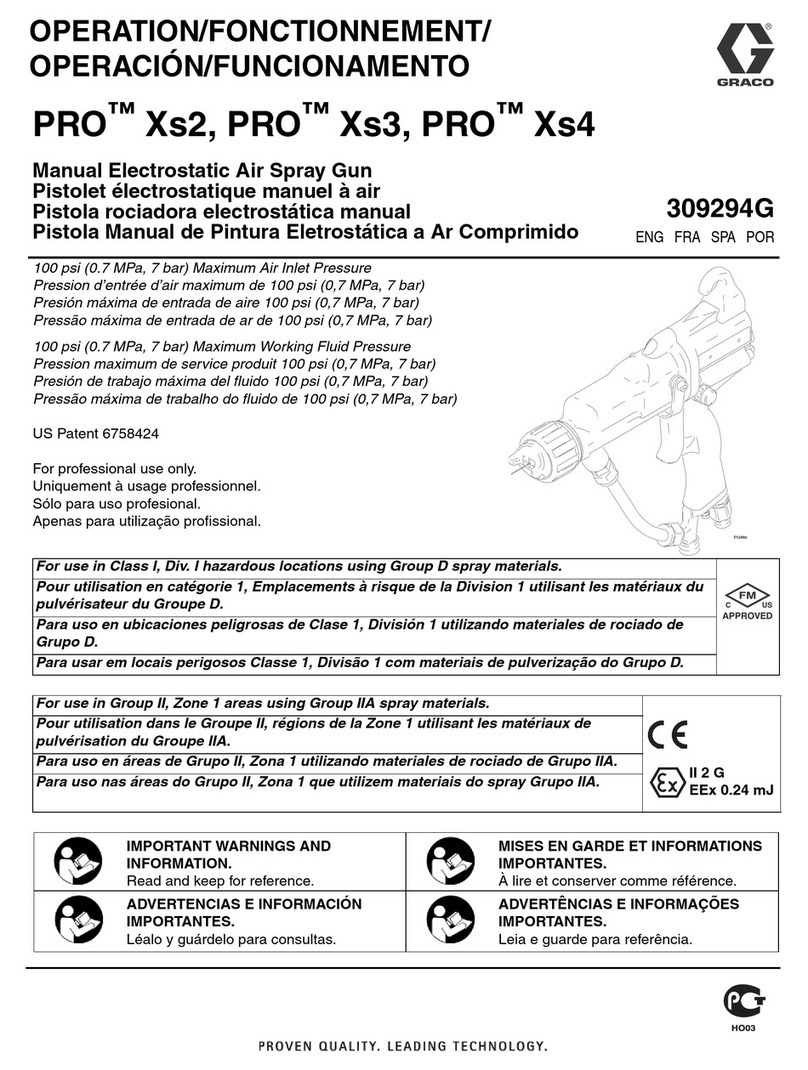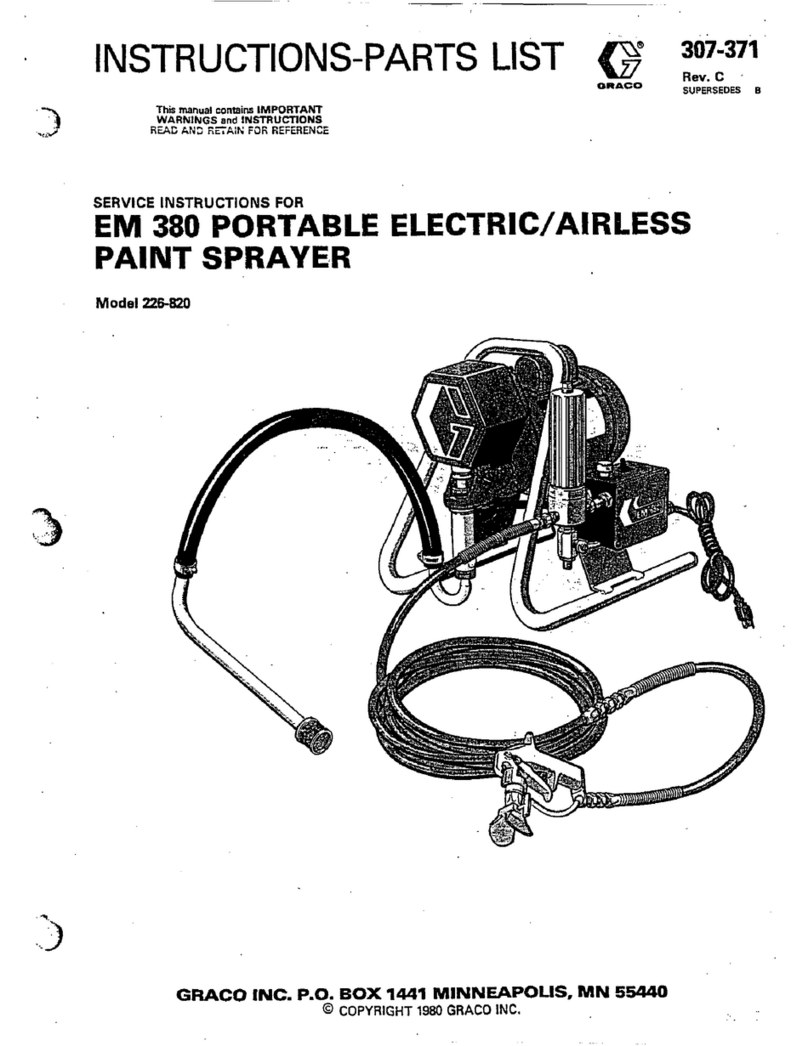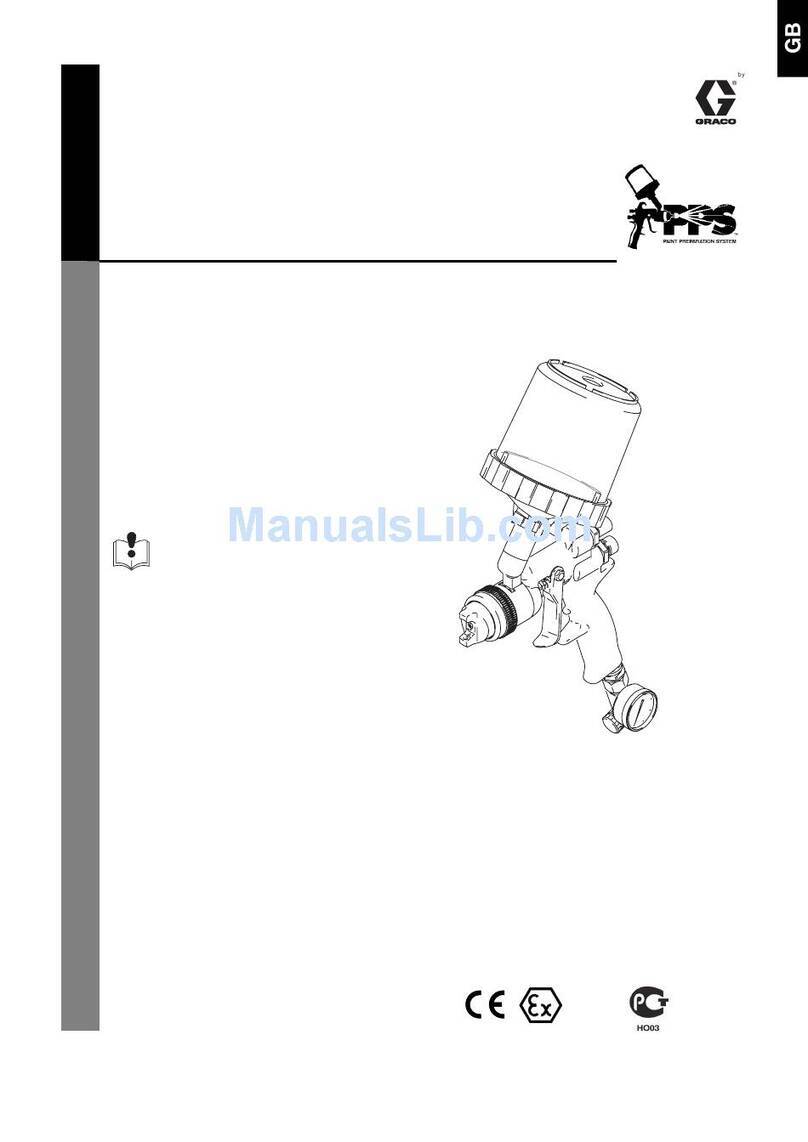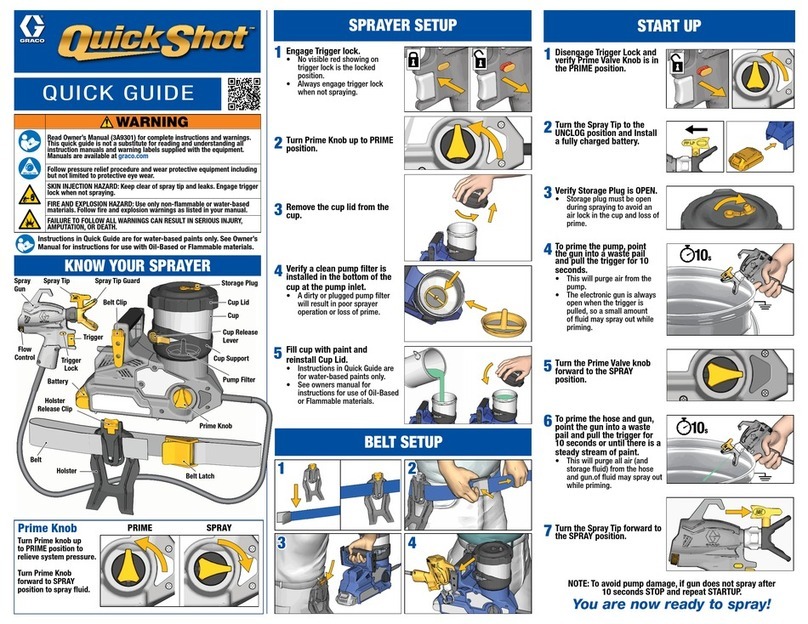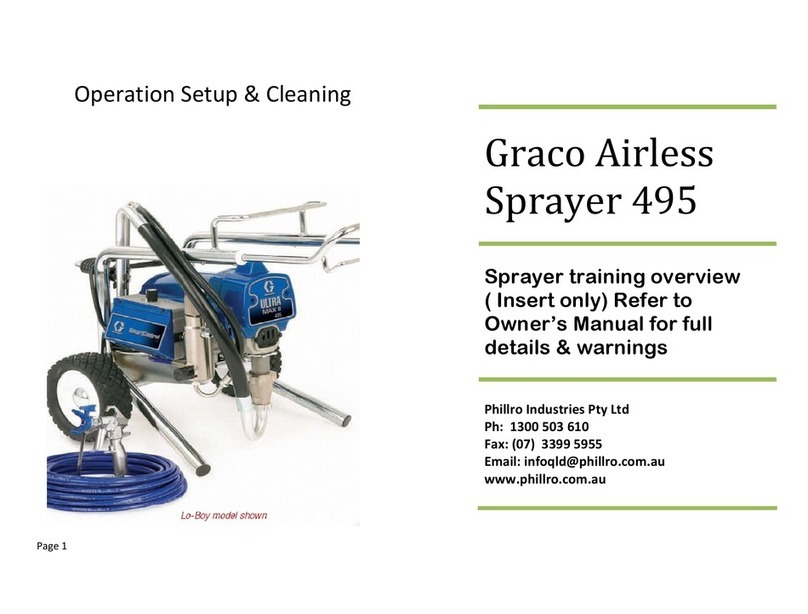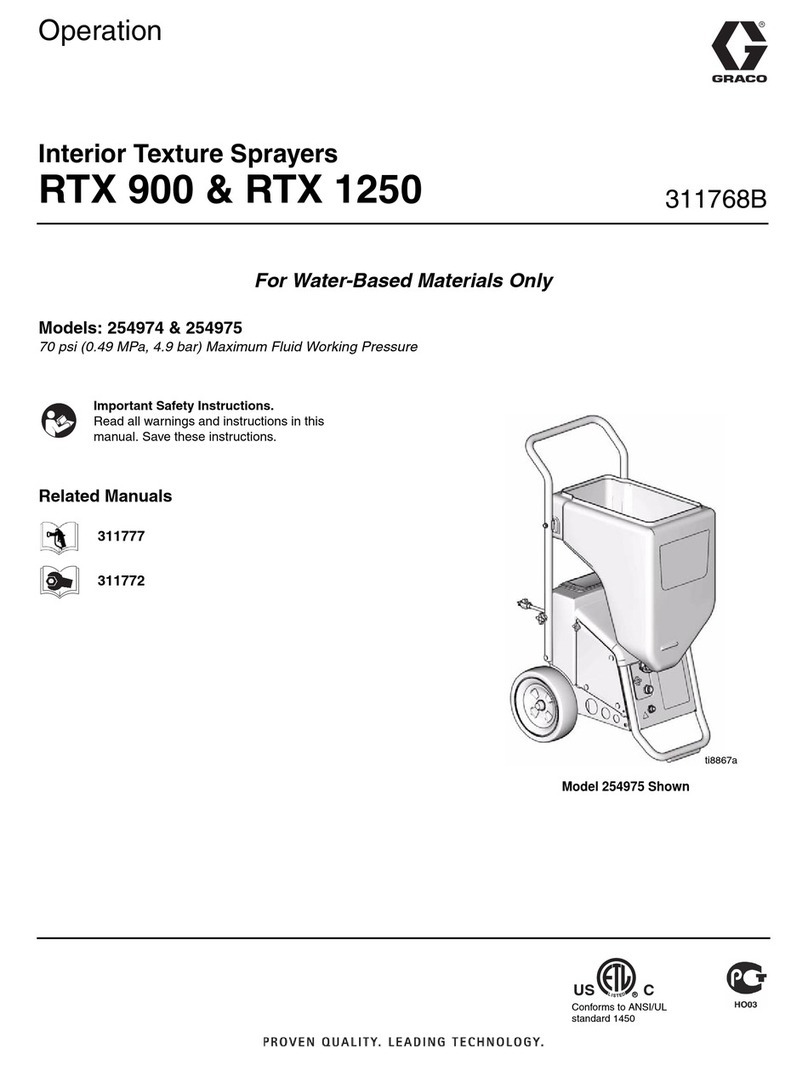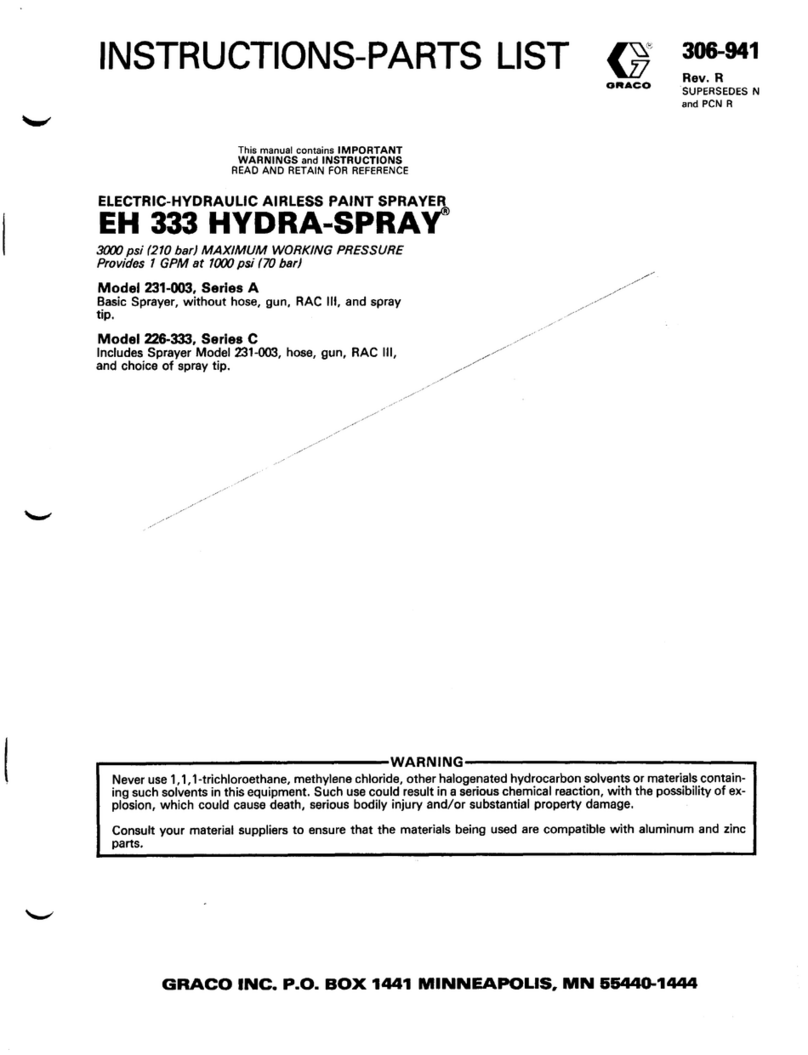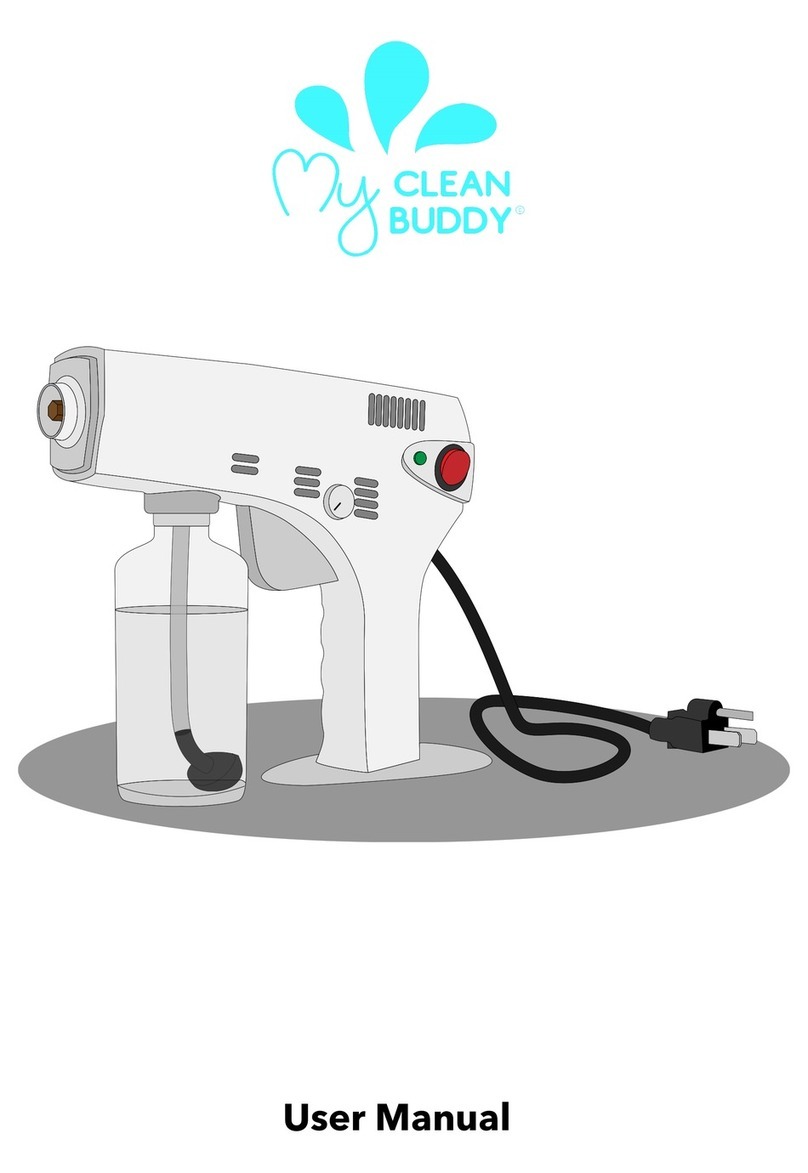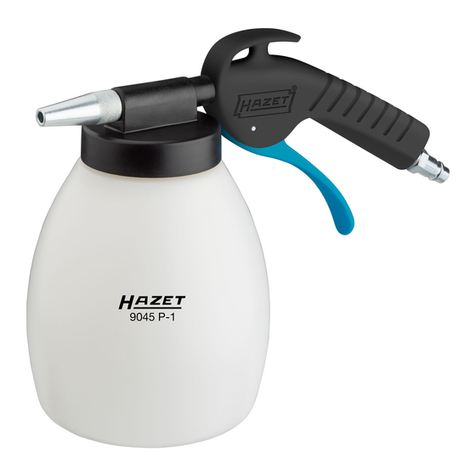
FIRE OR EXPLOSION HAZARD _
Static electricity
is created by the high velocity flow of fluid
through the pump and hose. If every part of the spray equip-
ment is not properly grounded, sparking may occur, and the
system may become hazardous. Sparking may also occur
.
..hnc.
mi..mn;nrr
in
AC
,.mrrl,
anrrinrr
3
-,1,-r
cnannl..
#-#VA
c
narLr
WIIC,
I
pl”~Iylo
‘V
II
1
“I
UI
I)rl”~yll
“L(
CL
pw”Ka
3uppy
b”I”.
upcwna
can ignite fumes from solvents and the fluid being
sprayed,
dust particles and other flammable substances, whether you
are spraying
indoors or outdoors, and can cause a fire or ex-
plosion and serious bodily injury and property damage. Do not
plug in or unplug any power supply cords in the spray area
when
there
is
gnv chance of ianitina
fums
.cti!!
in
the &ri
I
--.-..--
--
-a-‘-----w
If you experience any static sparking or even a slight shock
while using this equipment, STOP SPRAYING IMMEDIATE-
LY. Check the entire system for positive grounding. Do not
use the system again until the problem has been identified and
corrected.
Grounding
To reduce the risk of static sparking, ground the pump and all
other spray equipment used or located in the spray area.
rUCrY
\,na.v Irrm~l
alsr+rirml
eArla
4fir
da+&larl
a.Al.AAi~m
;r.
bl1Lblb
y”“’
I”brnl
~l~\rlllLa1
b”“W
,“I
“GCQIIWU
~l”“ll””
IM
II
I-
structions for your area and type of equipment. BE SURE to
ground all of this spray quipment:
1. Pump: use a ground wire
and clamp
separate pump instruction manual.
HOSE SAFETY
as
explained in your
High pressure fluid in the hoses can be very dangerous. If the
hose develops a leak, split or rupture due to any kind of wear,
damage or misuse, the high pressure spray emitted from it can
cause an injection injury or other serious bodily injury or pro-
peq
damage.
ALL
FLl!J!Q
SpP,Ay
HOSES
MUST
HAVE
CDPIalU15,
YT
“.I.”
GUARDS! (except certain mastic applications). The spring
guards help protect the hose from kinks or bends at or close to
the coupling which can result in hose rupture.
TIGHTEN all fluid connections securely before each use. High
nrecl~rc)
fitrid
Fan
diclrdrra
a
Innen
rnlrnlinf3
nr
allnw
high
ps.
-w.
.s
. .w.w
““.
I
.d.“.rr”~”
Y
.Y”W
“““~.,l.~
V.
“.I”..
pressure spray to be emitted from the coupling.
NEVER use a damaged hose. Before each use, check entire
hose for cuts,
leaks,
abrasion, bulging cover, or damage or
movement of the hose couplings. If any of these conditions
exist,
reolace
the hose
immediate!yC
00
NOT try to recauale
-w-
--- --
-
----l-y-
high pressure hose or mend it with tape or any other device. A
repaired hose cannot contain the high pressure fluid.
The piston in the air motor, located behind the air motor plates
or shield, moves when air is supplied to the motor. Moving
nar+e
e-m
n;rrA9
Al
am*.
r+a+a
.,A.
1.
Gn-rr
A.
ndhar
hn#L
mar+s
pa&Y
UWII
)5111u*1
“I
La~IIy”I~wJ
,““’
Irn.~“Q
“I
“tllwl
“vu,
p#ILQ.
Therefore, NEVER owrate the pump with the air motor plates
or shield removed. KEEP CLEAR of moving parts when star-
ting or operating the pump. Before checking or servicing the
pump, follow the Pressure Relief Procedure on page 2 to
prevent the pump from starting accidentally.
2. Air hoses:
use only grounded air hoses.
3. Fluid hoses:
use only grounded fluid hoses.
4.
Ali
compressor: follow manufacturer’s recommendations.
5.
Pole gun: grounding is
obtained through connection to a
------I..
---..-A-2
II
-2
L--- --A
properly
grounoea
num nose ano pump.
6.
Objecf being
sprayed:
according to your local code.
7.
Al. solvent pails used when flushing, according to local
code. Use only
metal
.pai&
which are conductive, placed
on a grounded surface. Do not place the pail on a non-
conductive surface, such as paper or cardboard, which
in-
terrupts the grounding continuity.
a.
To maintain grounding continuity when flushing or reliev-
ing pressure,
always hold a metal part of the gun firmly to
+h.a
r;rla
A4
c?,
ACCIl.*AmA
-..h+e/
-8,:1
,h....
--_-
&L..
nAa
tnrr
LIIU
auez
VI
a
~IUUI
IUWU
tltcxa~
pau,
CIIPII
upwr
i~ie
uivfurr
lever.
Rushing Safety
To
r&l_ree
f&j
r&k
Of
ifijeC?iOy!
injury,
s?;?atic
cnarkinn
or
“vu.
n-0
.y,
splashing follow the Pressure Relief Procedure
on page 2,
and remove the spray tip before flushing. Hold a metal part of
the gun firmly to the side of a grounded
metal
pail and use the
lowest possible fluid pressure during flushing.
HANDLE AND ROUTE HOSES CAREFULLY. Do not pull on
hoses to move equipment. Do not use fluids or solvents which
are not compatible with the inner tube and cover of the hose.
Hose Grounding Continuity
Proper hose grounding continuity
is essential to maintaining a
“.A.lnAd
emweh.,
r.rr+sm
Pka-L
*ha
alam+Afiml rsr;reomrrs Al ..A.
I.
ym
vu*
wuu
Q~I my Q~QLWI I I. by IW~A
LI
IV czwbu ubal Ie313cat I~G VI ~UUI
air and fluid hoses at least once a week. If your hose does not
have a tag on it which specifies the maximum electrical
resistance, contact the hose supplier or manufacturer for the
maximum resistance limits. Use a resistance
meter in the ap-
propriate range for your hose to check the resistance. If the
rr#ktsnrn
n~rndc
tho
rn~nmmnnr(d
limitc
.W.“.Y.
I””
“#8YYY”Y .I .Y
I
YY”.
I
.I
I
l”,
.YY”
II, 1II.“,
rep!ace
I? im-
mediately. An ungrounded or poorly grounded hose can make
your system hazardous. Also, read FIRE OR EXPLOSION
HAZARD,
above.
.
lMPORTANT
United States Government safety standards have been adopted under the Occupational Safety and Health Act. These standards
-par-
ticularly the General Standards, Part 1910, and the Construction Standards, Part 1926-should be consulted.

